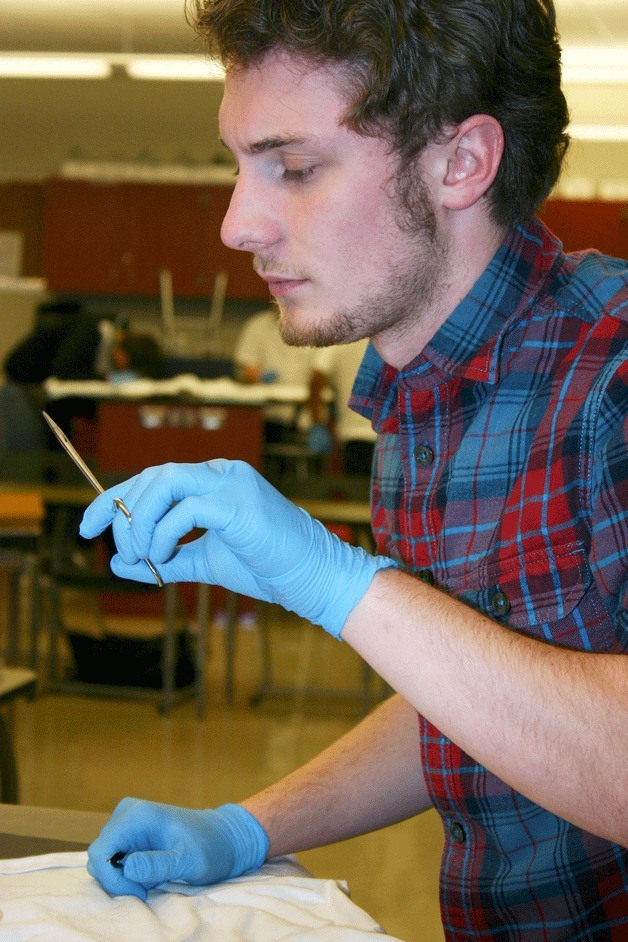It’s not a crime lab, but the analysis of blood spatters and the threat of contamination are commonplace.
In Coupeville teacher L.D. Eller’s classroom, forensic science is the name of the game.
For the first time this year, Coupeville High School is offering a forensics class through which students can earn science and vocational tech credits. Eller said she suggested the class be added to the school’s academic roster in order to give students some variety. Eller herself has 17 years’ experience working in a clinical lab and a master’s degree in molecular biology. Now she’s been with the Coupeville schools for nearly 20 years.
About 40 students make up the two forensic classes at the high school and many said they were thrilled to be faced with a creative new syllabus.
“It’s different than every other class I’ve taken,” senior Laura Chan said. Chan said she’s learning key takeaways that she hope to apply to a career in the medical field later on.
Junior Taya Boonstra also plans to use her new lab skills in the future. Though she too is considering a profession in the medical industry, she said she’s keeping her options open.
“I wouldn’t mind doing autopsies,” she said. “Blood doesn’t bother me, so I could do that.” Boonstra said she originally signed up for the class because she’s intrigued by popular TV shows like “NCIS” and “CSI.”
Recently, the students have been deciphering trace evidence. They were each given a leftover T-shirt from last year’s student government class and were assigned to wear it for 24 hours. Then, Eller had them place the shirts in protective bags and turn them into her. After the shirts were mixed up, Eller handed each student one to examine.
The students wore gloves and used tweezers and magnifying glasses to pull off hairs and other fibers to help them identify whose shirt they now held and how that student spent his or her 24 hours.
“Oh I found a red fiber,” Boonstra said as she looked over her T-shirt. “Someone’s in trouble, could be blood.”
Boonstra’s classmates shared in her enthusiasm to tackle the assignment and spoke enthusiastically about previous units. Senior Christian Chambers said he enjoyed the class’s earlier project which focused on blood spatters.
“On smooth surfaces, they’ll stay in perfect circle, but on rough surfaces they’ll go all over the place,” he said, sharing his knowledge.
Eller said the students learned about the shape of the blood cell at different heights and angles before they completed a comprehensive test.
“It was kind of cool,” she said.
Despite the class’s popularity, Eller does worry that the class may not be on the schedule next year due to state budget cuts.
“It’s a fairly extensive class, and it uses lots of consumables,” she said. “But we’re really hoping it’ll continue.”



